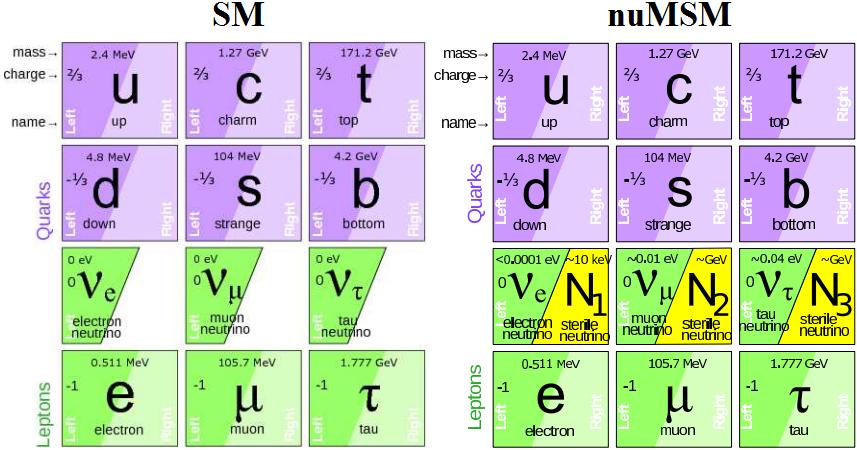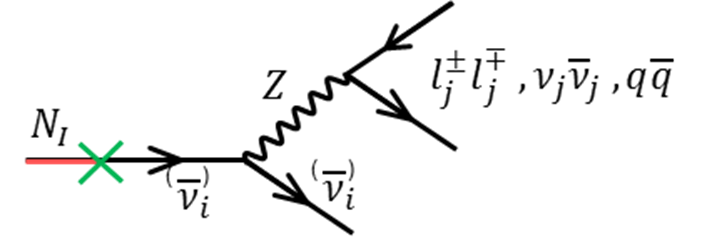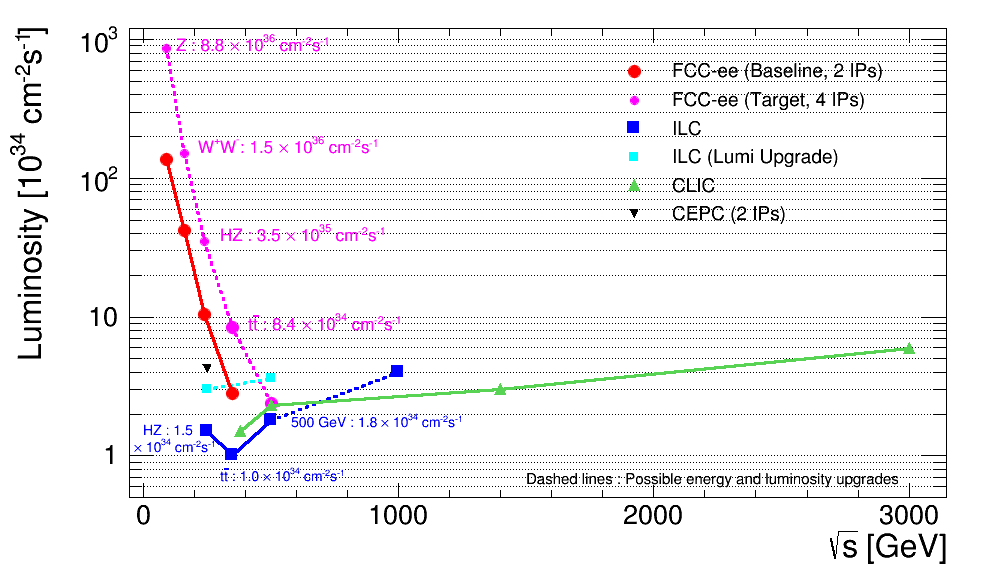Hunting for right-handed neutrinos: the new game in town
What lies behind and beyond the Standard Model is an obsession of particle physicists today. The neutrino physicists have a somewhat different palette of opinions as compared to their colleagues working at the high energy frontier. They consider that the discovery that neutrinos have mass, (which earned Kajiita and McDonald their Nobel Prize in October 2015), provides fundamental guidance into the unknown. According to the Standard Model of particle physics, neutrinos were originally thought to have no mass. But from 1968 to 1998, physicists found clear evidence that the three known types of neutrinos —electron, muon and tau— can oscillate, or change, among each other, which is possible only if they have mass.
The first instinctive reaction is ‘neutrinos are massive? So what? All fermions have masses!’ However neutrinos are special in several ways. Firstly, they are electrically neutral while all other fermions are electrically charged. Secondly, they are only “half known” since today we only observe and produce left-handed neutrinos and right-handed antineutrinos. In particle physics, handedness is a quality that emerges from a particle’s mass and spin. If neutrinos were massless they wouldn’t be able to change their handedness; but the fact that they have mass means that they can. However, the right-handed component, which exists for all charged fermions, and hence should also exist for any massive fermion, seems to be missing. Thirdly, the masses of the neutrinos are extremely small compared to those of all known charged fermions, more than 5 million times lighter than electrons. So if the Higgs mass generation was a missing key ingredient of the SM for 50 years, the origin of the neutrino mass has now clearly taken over as the principal missing key ingredient of the SM. It remains beyond doubt that its resolution will involve new physics.
Unlike the other fermions, the electrical neutrality allows neutrinos to acquire mass by coupling a neutrino to an antineutrino through a so-called “Majorana” mass term. In addition they may also acquire mass through the normal Higgs interaction which couples left-handed particles to right-handed particles, i.e. through the so-called Dirac mass terms. The Majorana mass term is forbidden for charged fermions because it violates the conservation of charge, a very well verified law of physics, but there is no known fact that forbids Majorana mass terms for neutrinos. If neutrinos have both Dirac and Majorana mass terms, the so-called ‘see-saw’ mechanism may take place, in which there exists four neutrino states per family (just like there exist four states of the electron e-L e-R, e+L e+R), but there is an energy-level splitting so that in addition to the known, light left-handed neutrino and their antineutrino, two heavier right-handed ones might exist. The mechanism accounts for the fact that known neutrinos appear to be much lighter than ‘normal’ and only feature as left-handed in SM interactions. All is nice and beautiful, the only difficulty being that the Majorana mass terms being totally unknown, any right-handed neutrino mass between a fraction of eV/c2 up to a fraction of the GUT scale (1015 GeV/c2) is conceivable. This is a very large hunting ground!

Particle content of the Standard Model and its minimal extension in the neutrino sector (νMSM). In the SM (left) the right-handed partners of neutrinos are absent. In the νMSM all fermions have both left and right-handed components. (Image taken from Gninenko, S.N. et al. Adv. High Energy Phys. 2012. arXiv: 1301.5516, DOI: 10.1155/2012/718259).
The right-handed neutrinos are fascinating conjectures with, potentially, critical roles in the evolution of the Universe. First of all, the right-handed neutrinos are singlets under the electromagnetic, the weak, and the strong interactions; for this reason they are also called ‘sterile neutrinos’. If it weren’t for the see-saw mechanism they would only directly interact via gravity. Thanks to the mixing with the light neutrinos, they undergo a tiny fraction of the weak interaction. Similarly to what happens for quarks, the existence of three families of neutrinos mixing among themselves is expected to result in a CP-violating phase, which is presently searched for in long baseline neutrino oscillation experiments. Adding to this the fact that the Majorana mass term effectively turns neutrinos into antineutrinos – in other words matter into anti-matter -- this combination provides a very natural mechanism for generating a net lepton number in the early Universe, so called leptogenesis. Together with processes capable of converting a lepton asymmetry into a baryon asymmetry, so called sphalerons, this may give us the fundamental source of the baryon asymmetry in the Universe – or not depending on the value of parameters.
In addition, the near-sterileness of the right-handed neutrinos makes them obvious candidates for Dark Matter which accounts for about 20% of the energy content of the Universe. In this case, it would be slowly decaying Dark Matter, with the interesting feature of producing potentially detectable signals – sterile neutrinos in the energy range of a few keV are indeed good Dark Matter candidates, decaying as N -> νγ, as some weak signals may indicate [1], [2], [3].
Thus, the right-handed neutrinos could not only provide a natural solution to the smallness of neutrino masses, but may also be at the origin of two of the most striking facts that presently motivate our searches for physics beyond the Standard Model [4]. Unless we explore the neutrino portal in earnest, it may be that we are overlooking an important possibility and opportunity!
Being almost completely sterile the right-handed neutrinos would be extremely difficult to detect. For masses in excess of the electron mass, the production and decay of sterile neutrinos mostly happen through the mixing with virtual "off mass shell" neutrinos. This means that right-handed neutrinos participate to all interactions in which neutrinos are exchanged but with a coupling that is suppressed by a very small mixing angle, which can be as small as |U|2 almost equals mν/ mΝ. E.g. a right-handed neutrino with a mass of 50 GeV/c2 mixed with a light neutrino of mass 0.05 eV/ c2 would result in a mixing angle that could be as small as |U|2 almost equal to 10-12: one would need to produce 1012 (one million million) neutrinos to produce one right-handed neutrino. Assuming that their mass is within the kinematical limit, the right-handed neutrinos may thus be produced in weak decays of flavoured hadrons and in decays of W, Z and Higgs bosons.
The decay of right-handed neutrinos as illustrated below leads to final states such as N -> Z(*)v, N -> W(*) l, N -> H(*)v decays where the final state boson can be virtual or real depending on the heavy neutrino mass.


The decay rate is largely determined by the mixing angle θ and the neutrino’s mass. In the case of very small mixing angles, the lifetime of right-handed neutrinos can be quite long. Despite the challenges, these characteristics bring very distinct signatures that can be exploited at both beam dump experiments and at high luminosity colliders in a complementary manner. While beam dumps are limited in the mass range of charmed or beauty mesons, Z and W factories are sensitive to larger masses, while higher energy colliders can explore higher masses but for only for relatively large couplings.
The hunt for the right-handed neutrinos might be long and difficult, as we have no idea of their masses. Recently, advances have been made for right-handed neutrinos with masses below the W, Z and H masses, i.e. below the Fermi scale. This is an interesting possibility since the major shortcomings of the Standard Model discussed above could then be addressed without introducing a new energy scale. In fact, the experimental and theoretical constraints from cosmology and astrophysics now indicate that the majority of the interesting parameter space was beyond the reach of the previous accelerator based searches, but that it is open and accessible to current and future facilities. The present situation for these searches is shown in Figure 1, left. As can be seen there is a large space between the lower limit on the couplings and the present limits. The strongest bounds on the interaction strength of new light and long-lived particles have been set below the mass of the kaon. Above this scale the bounds weaken significantly. One can also see that the parameter set that allows generation of the baryon asymmetry of the universe lies at very small couplings that will be the hardest to reach!
Figure 1 Left: An overview of present limits and some future capabilities of the hunt for right handed neutrinos, here in the case of the mixing to the electron neutrino, based on the SHIP physics report arxiv:1504:04855. Also indicated is the decay length for a particle produced in a Z decay at rest. Right: a recent illustration of the possible range of sensitivity of the Future Circular Colliders, as discussed in the recent FCC physics workshop (arXiv:1611.05000 and arXiv:1612.02728v2).
The long lifetimes associated with the lower unexplored region of masses and couplings of right-handed neutrinos may only be probed efficiently in a beam dump configuration. The Search for Hidden Particles (SHiP) is a recently proposed beam dump experiment with the aim of exploring a large variety of models with Hidden Sector portals, which addresses the shortcomings of the Standard Model including inflation, the hierarchy problem etc., without involving a new mass scale. These models are all based on introducing very weakly interacting particles such as the sterile neutrinos, dark photons, dark scalars or axion-like particles (ALPs) with masses below the Fermi scale. Even in the scenarios in which BSM physics is related to high mass scales such as SUSY, many models contain degrees of freedom with suppressed couplings that stay relevant at much lower energies. The experiment is a new intensity frontier experiment that will make use of the very high proton intensity of the SPS 400 GeV beam to provide sensitivity to very weakly interacting particles with masses from sub-GeV up to O(10) GeV and with super weak couplings down to 10-10 . SHiP aims at searching for right-handed neutrinos produced in the decays of charm as well as beauty mesons by detecting directly their decays to SM particles. Sharing the SPS beam time with the other SPS fixed target experiments and the LHC allows producing 2 x 1020 protons on target in five years of nominal operation. The experiment will be able to achieve sensitivities which are up to four orders of magnitude better than previous searches in a region which is cosmologically interesting.
Searches for right-handed neutrinos with masses below the W mass or above, are also pursued at the LHC. The production channels that may be efficiently exploited by ATLAS and CMS for right-handed neutrinos above the mass of the b quark are via the decays of W --> Nl, where the sterile neutrino subsequently decays to llv or lqq as shown in the Feynman diagram


Feynman diagram dominating the production of right-handed neutrinos at the Z pole.
Under the assumption that the sterile neutrino is of Majorana type, lepton number violation can produce the “smoking-gun” collider signature of leptons of the same electric charge in the final state. Below ~20 GeV, the sterile neutrinos decay at a measurable distance from the proton interaction point. Thus ATLAS and CMS explore the distinctive signatures consisting of a prompt lepton in association with lepton jets or di-leptons originating at a displaced vertex. The searches are aiming at considering all the cases where the lepton pair is either only electron or muon flavour, or with mixed flavours. The prompt lepton is essential for triggering. The like-signed lepton charge and the kinematic fit of the final state to the W mass in the case of lepton jets allow efficiently discriminating against the background. With 300 fb-1, the LHC experiments should be able to probe mixing angles down to a level of 10-4 – 10-3. For higher-mass right-handed neutrinos above 20 GeV, similarly small mixing angles may be probed in prompt tri-lepton final states.
LHCb on the other hand is capable of exploring the low mass range from 250 MeV up to 5 GeV in semi-leptonic D and B decays as shown in the Feynman diagram below. The search is also profiting from the like-signed leptons and a displaced vertex signature with lifetimes corresponding to up to 1 microsecond [5]. With the data set that is expected for Run 2, LHCb should be able to explore couplings square down to 10-7.

In the future, searches for sterile neutrinos may also be based on measurements of the Higgs decay parameters. Right-handed neutrinos would enlarge the width of the total Higgs decay, that would effectively reduce all the SM branching ratios and, if heavy neutrino decays took place inside the detector, the subsequent decays would be counted as SM Higgs decays into ZZ or WW since they lead to the same final states.
Future colliders will allow extending the sensitivity in the searches for right-handed neutrinos. The FCC-ee project is aiming for collision energies between 90 and 350 GeV as a possible first step to a 100 TeV proton collider. FCC-ee will be able to achieve very high luminosities, which distinguishes it from linear collider projects, that are however able to reach higher energies. The foreseen luminosity, taking into account the capability of circular colliders to provide collisions in two (up to four) interaction points as shown in Fig. 2 below

Figure 2 Luminosity performance of the various e+e- collider options.
The high luminosities of FCC-ee at the Z pole will lead to the production of a total of several 1012 Z bosons within a few years of operation, that were so far assumed to be completely out of reach for high energy lepton colliders. In a lepton collider, heavy neutrinos can be produced through Z decay as shown in the Feynman diagrams. This process could result in a few heavy right-handed neutrinos N decaying to fully visible final state of a charge lepton and a pair of quarks. The study of heavy neutrinos from Z decays would be limited due to the rich background but thanks to the long lifetimes the picture changes dramatically. It is difficult to imagine any significant background in the search for a rather heavy object (e.g. 20-80 GeV) decaying one meter away from the interaction point in a lepton-positron collider.
A lepton-positron Tera Z factory like the one explored under the FCC-ee would make the hunt for right-handed partners of the light neutrinos an exciting and distinct possibility. The preliminary studies [6] on the sensitivity to these decays look extremely promising and motivate further studies to optimize the detector design.
Moreover, a future proton-proton circular collider (FCC-hh) reaching 100 TeV, huge numbers of W’s will be produced, which might allow access to the same parameter region as the FCC-ee option.

Given the ability to measure both the initial and final state lepton they would provide invaluable information on the mixing between light and heavy neutrinos, as well as discover flavour violation. These results would allow to reach definitive conclusions if masses are below the W mass. The experiments in FCC-hh could achieve sensitivities which are up to four orders of magnitude better than previous collider searches, accessing a significant fraction of the unexplored parameter space which is consistent with cosmological constraints. Despite the significant background and trigger issues that one has to face, the simultaneous presence of the initial lepton from W-decays and the detached vertex with kinematically constrained decay allows for a significant reduction in the background. This also allows a characterization both of the flavour and charge of the produced neutrino, thus giving us information of the flavour sensitive mixing angles and a test of the fermion violating nature of the intermediate (Majorana) particle.
Finally, if neutrino oscillations arise from the existence of heavy sterile neutrinos, direct searches at the FCC-eh would have great discovery prospects in kinematic regions complementary to FCC-hh and FCC-ee, giving the FCC complex a striking potential to shine light on the origin of neutrino masses.
Conclusion
In the spirit of seeking an all-inclusive simple extension of the SM, the sterile right-handed neutrinos make for ideal candidates. Their existence would confirm the sew-saw mechanism and the role of neutrinos in new physics beyond the Standard Model. Moreover, if the parameters are right, they could provide answers related to a large part of the Universe that remains unknown to us, and give new insights about the formation of the early Universe. The discovery of right-handed neutrinos might provide the answers that we are looking for, or they might not, in which case many further questions would open up. Even negative results would allow to shed a light on the DM properties and therefore restrict the class of extensions of the SM.
Reference:
[1] E. Bulbul, et al., Detection of An Unidentified Emission Line in the Stacked X-ray spectrum of Galaxy Clusters, arXiv:hep-ph/1402.2301, doi: 10.1088/0004-637X/789/1/1
[2] A. Boyarsky, et al., An unidentified line in X-ray spectra of the Andromeda galaxy and Perseus galaxy cluster, arXiv:hep-ph/1402.4119
[3] N. Cappelluti. et al., Searching for the 3.5 keV Line in the Deep Fields with Chandra: the 10 Ms observations, axXiv:astro-ph/1701.07932
[4] T. Asaka, M. Shaposhnikov, The nuMSM, dark matter and baryon asymmetry of the universe, Phys.Lett. B620 (2005) 17–26. arXiv:hep-ph/0505013, doi:10.1016/j.physletb.2005.06.020
[5] R. Aaij et al. (LHCb Collaboration), Search for Majorana Neutrinos in B−→π+μ−μ− Decays, Phys. Rev. Lett. 112, 131802.
[6] A.Blondel et al., Search for Heavy Right Handed Neutrinos at FCC-ee, arXiv:hep-ph/1411.5230
[7] S. Antusch, E. Cazzato, O. Fischer. Sterile neutrino searches at future e- e+ , pp, e-p colliders, arXiv:hep-ph/1612.02728
The Feynman diagrams for this article were kindly produced by Richard Jacobsson.
